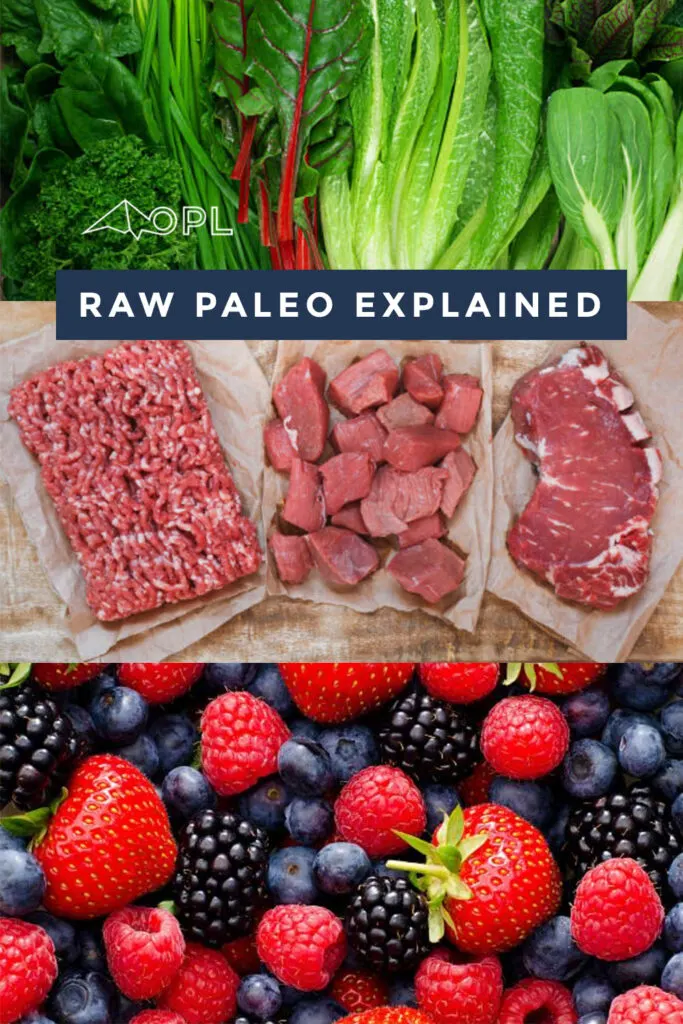The Paleo diet, also known as the “caveman diet,” is a dietary plan based on the types of foods that are thought to have been eaten by humans during the Paleolithic era or before the Agricultural revolution, approximately 2.6 million to 10,000 years ago.
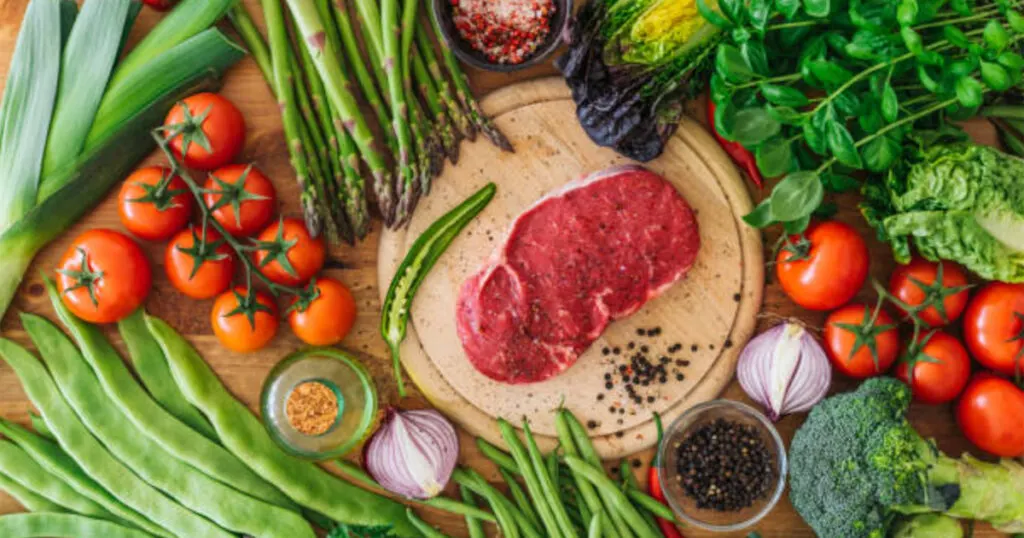
It’s important to note that the paleo diet is not a strict set of rules and there is some flexibility in the types of foods that can be included or excluded. Some people choose to follow a “Raw Paleo” diet, which involves eating only raw, uncooked foods.
History of Raw Paleo
The first popularized version of the Paleolithic diet was developed by gastroenterologist Walter L. Voegtlin in the 1970s. This diet was based on the premise that humans are genetically adapted to eat the types of foods that were available during the Paleolithic era.In the years since Voegtlin’s work, the Paleolithic diet has undergone various iterations and adaptations, with some versions of the diet emphasizing the consumption of grass-fed meats and raw, unprocessed foods. This approach, known as the Raw Paleo diet, has gained popularity in recent years as a way to support optimal health and wellness.
Raw Paleo Diet
The Raw Paleo diet is a dietary approach that combines elements of the Paleolithic diet with a focus on consuming raw (uncooked), unprocessed foods. This way of eating is based on the belief that the healthiest diet for humans is one that resembles the diet of our hunter-gatherer ancestors, who lived during the Paleolithic era.
The goal of the Raw Paleo diet is to consume as many nutrients as possible in their natural, unalteredstate, as it is believed that this will provide the greatest health benefits.
Raw Food on a Paleo Diet: Does it work?
Eating raw food on a Paleo Diet is certainly possible and can work. Eating raw foods that fit into the Paleo diet can be an excellent way to get the nutrition your body needs without having to cook or prepare anything. This includes fruits and vegetables, nuts and seeds, fish, meat, and eggs.Eating a variety of raw foods can provide important nutrients like vitamins, minerals, healthy fats, and proteins which are important for overall health. Some people prefer to eat a completely raw diet while others only partially follow this style of eating.
Whatever you choose, it’s important to make sure that the foods you consume are nutrient-dense and part of a healthy balanced diet. Eating raw food on a Paleo Diet is definitely possible and could be beneficial if done correctly.
Health Benefits of Raw Paleolithic Diet
There are several potential health benefits associated with following the Raw Paleo diet. Some of the potential benefits of this way of eating include:
Weight Loss
Weight loss is a common goal for many people and the Raw Paleo Diet may be an effective way to achieve this. It focuses on unprocessed and nutrient-rich foods such as raw fruits and vegetables, nuts, seeds, and meat that are high in protein and healthy fats. Eating these types of foods helps to keep you full longer, reducing your overall calorie intake.
Additionally, by avoiding processed foods with added sugar, you can further reduce your daily caloric intake. While it is possible to lose weight on the Raw Paleo Diet, it’s important to remember that the diet should be followed in conjunction with regular exercise for optimal results.
Blood Pressure Control
A raw paleo diet has been proven to be beneficial for overall health and well-being, particularly in terms of controlling blood pressure. The elimination of processed foods from the diet helps to reduce sodium intake, which is a major contributor to hypertension.
Manages Cholesterol
Eliminating processed foods from your diet helps reduce the amount of trans fats which can help to lower bad cholesterol levels and improve overall heart health. Eating raw paleo also helps to increase the intake of healthy omega-3 fatty acids which can help protect against heart disease. Making small changes to your diets such as switching out processed snacks with fresh fruits or vegetables may be enough to make a difference in your cholesterol levels.
Reduces Triglycerides
A raw paleo diet is that it can help reduce triglycerides. Triglycerides are a type of fat found in your blood, and having too much of it can lead to health issues such as high cholesterol. Eating a diet rich in lean proteins, healthy fats, and complex carbohydrates can help reduce these levels. avoiding processed foods and added sugars will also help reduce triglyceride levels.
What To Eat on a Raw Paleo Lifestyle?
If you are considering following the Raw Paleo diet, it is important to familiarize yourself with the types of foods that are included in this way of eating. It is important to note that the Raw Paleo diet can be challenging to follow, as it requires a significant amount of planning and preparation to ensure that you are consuming a balanced and varied diet.
Raw Animal Products
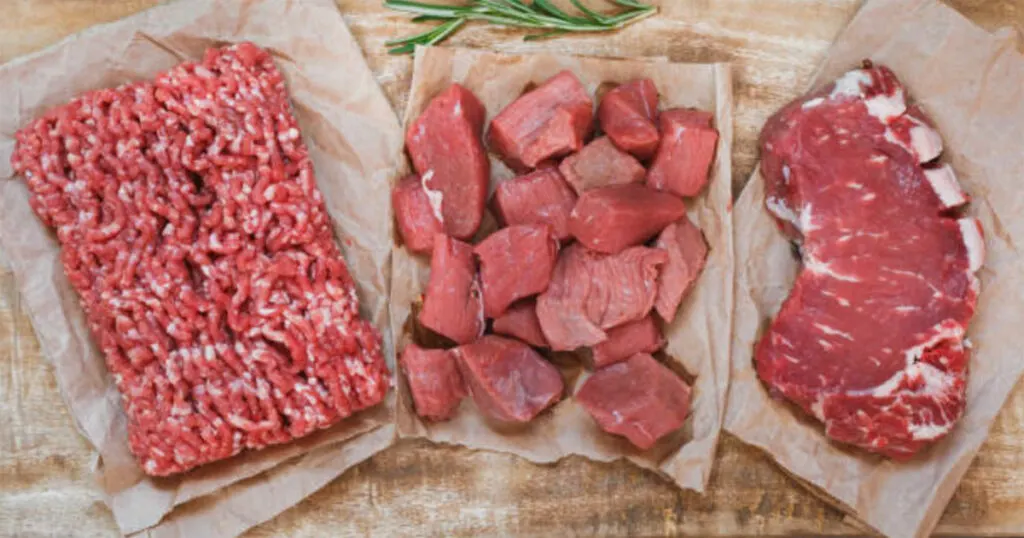
The raw paleo diet commonly includes grass-fed meats, wild-caught fish, and eggs as the main source of protein. The aim is to consume food that is as unaltered and as close to its natural state as can be.
Here is a list of raw meat options that are typically allowed on the Raw Paleo diet:
- Beef: Grass-fed beef is allowed on the Raw Paleo diet and can be consumed as raw, ground beef, or as steak tartare.
- Lamb: Grass-fed lamb can be consumed as raw, ground lamb, or as lamb tartare.
- Fish: Raw, fresh fish including sushi-grade fish such as salmon, tuna, and snapper.
In Specific: Raw Beef
Raw beef is a type of uncooked meat that comes from a cow. It can be used in a variety of dishes, such as steak tartare, carpaccio, and beef sushi.
Some people believe that eating raw beef can provide benefits such as improved digestion and increased energy levels. Raw beef may also contain some enzymes and nutrients that are destroyed during cooking, such as vitamins B and E.
Search for trusted, hight quality options when consuming raw beef.
Fruits
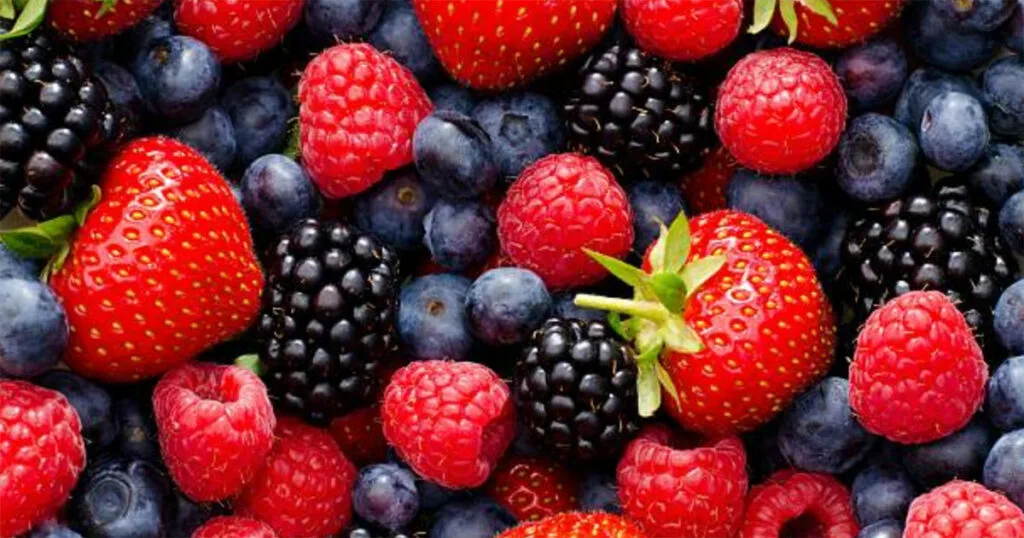
A wide variety of raw, unprocessed fruits is allowed on the Raw Paleo diet, including:
- Apples
- Berries (such as strawberries, raspberries, and blueberries)
- Citrus fruits (such as oranges, lemons, and grapefruits)
- Melons (such as watermelon, cantaloupe, and honeydew)
- Tropical fruits (such as bananas, pineapples, and mangoes)
- Stone fruits (such as peaches, plums, and cherries)
- Pears
- Grapes
- Kiwi
- Papaya
Vegetables
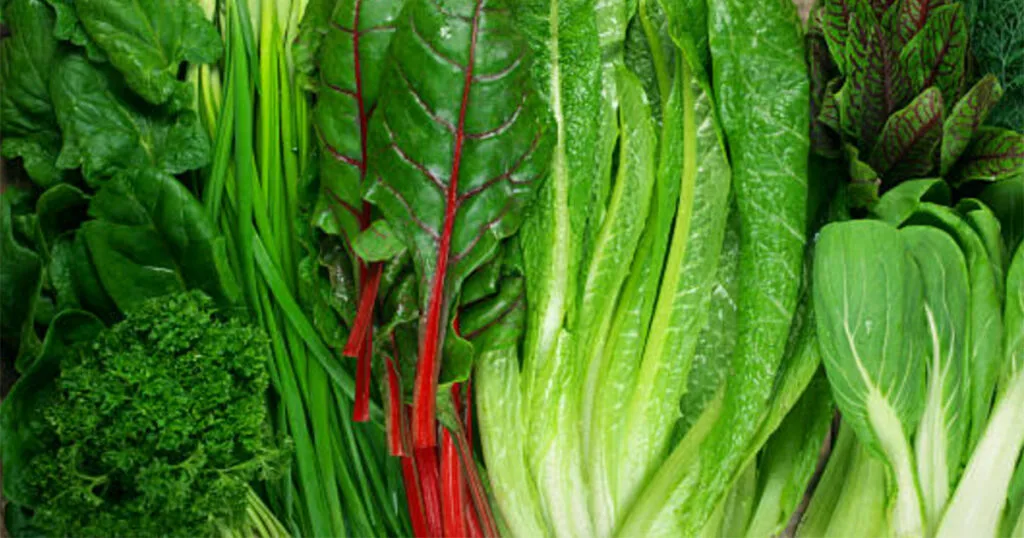
Eating raw vegetables is one of the best ways to get the most nutrient-dense foods into your body.
Here is a list of vegetables for a raw paleo diet:
- Leafy greens (such as spinach, kale, and lettuce)
- Cruciferous vegetables (such as broccoli, cauliflower, and Brussels sprouts)
- Root vegetables (such as carrots, beets, and sweet potatoes)
- Squashes (such as zucchini, pumpkin, and butternut squash)
- Bell peppers
- Tomatoes
- Onions
- Garlic
- Cucumbers
- Asparagus
Nuts and Seeds
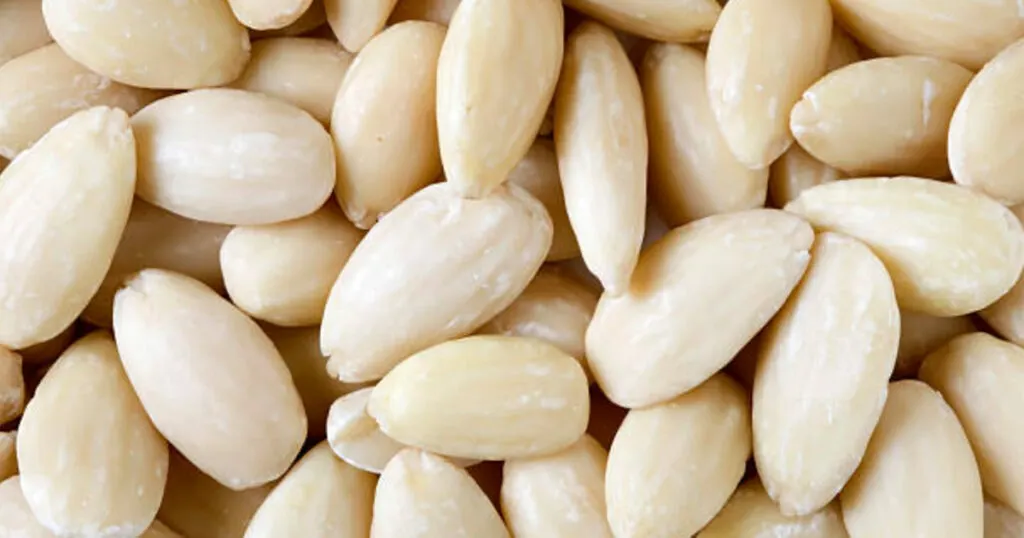
Other great sources of vitamins and minerals are nuts and seeds. They are gluten-free and low in carbs which makes them good food options on a raw paleo diet.
- Almonds
- Brazil Nuts
- Cashews
- Chestnuts
- Chia seeds
- Flax Seeds
- Hazelnuts
- Macadamia Nuts
- Pecans
- Pine Nuts
- Pistachios
- Pumpkin Seeds (pepitas)
- Sesame Seeds
- Sunflower Seeds
- Walnuts
General Rules When Consuming Raw Foods
Consuming raw foods can be a healthy and delicious way to obtain a wide range of nutrients. However, it is important to follow a few general rules in order to reduce the risk of foodborne illness and ensure that you are obtaining a balanced and varied intake of nutrients. These rules include:
- Wash all raw fruits and vegetables thoroughly before consuming them. This is especially important if you are consuming raw produce that has been grown conventionally, as it may be contaminated with pesticides or other chemicals. Washing your produce thoroughly can help to remove any dirt, bacteria, or chemicals that may be present.
- Store raw foods in the refrigerator or freezer to help prevent spoilage. This is especially important for raw meats and seafood, which can spoil quickly if not stored properly. Storing raw foods in the refrigerator or freezer can help to extend their shelf life and reduce the risk of food poisoning.
- Avoid consuming raw foods that are past their expiration date or that show signs of spoilage, such as a bad smell or mold. Consuming spoiled foods can increase the risk of food poisoning and other health problems. It is important to carefully check the expiration date of your raw foods and to discard any foods that show signs of spoilage.
- Handle raw foods safely in order to prevent the spread of bacteria. This includes washing your hands before handling raw foods and using separate cutting boards and utensils for raw and cooked foods. This can help to reduce the risk of cross-contamination and prevent the spread of bacteria from raw foods to cooked foods.
- Avoid consuming raw meats if you are pregnant, have a compromised immune system, or are at a higher risk of food poisoning. Consuming raw meats carries a risk of food poisoning, as it may be contaminated with bacteria or parasites. If you are pregnant, have a compromised immune system, or are at a higher risk of food poisoning, it is important to avoid consuming raw meats in order to reduce the risk of foodborne illness.
Frequently Asked Questions
What is the Raw Paleo diet?
The Raw Paleo diet is a dietary approach that combines elements of the Paleolithic diet, also known as the “caveman” or “stone age” diet, with a focus on consuming raw, unprocessed foods. This way of eating is based on the belief that the healthiest diet for humans is one that resembles the diet of our hunter-gatherer ancestors, who lived during the Paleolithic era.
What are the rules of the Raw Paleo diet?
The Raw Paleo diet is centered on the idea of consuming a wide variety of raw, unprocessed foods, including raw fruits, vegetables, nuts, seeds, and raw, grass-fed meats. Grains, legumes, and dairy products are NOT typically included in the Raw Paleo diet. It is important to carefully plan meals and ensure that you are obtaining a balanced and varied intake of nutrients.
What are the potential benefits of the Raw Paleo diet?
There are several potential benefits associated with following the Raw Paleo diet, including high nutrient density, a balanced intake of nutrients, weight loss, improved digestion, improved blood sugar control, improved heart health, improved mental health, and improved athletic performance. However, it is important to note that the potential health benefits of the Raw Paleo diet have not been extensively studied and more research is needed to confirm these potential benefits.
What are the potential drawbacks of the Raw Paleo diet?
The Raw Paleo diet can be challenging to follow, as it requires a significant amount of planning and preparation to ensure that you are consuming a balanced and varied diet. Some people may find it difficult to obtain enough calories from a diet that is primarily made up of raw foods, especially if they are physically active or have high energy needs.
What are the guidelines when consuming raw food?
When consuming raw foods it is important to follow a few general rules. These rules include washing all raw fruits and vegetables thoroughly before consuming them, storing raw foods in the refrigerator or freezer to help prevent spoilage, avoiding consuming raw foods that are past their expiration date or show signs of spoilage, handling raw foods safely in order to prevent the spread of bacteria, and avoiding consuming raw meats if you are pregnant, have a compromised immune system, or are at a higher risk of food poisoning.
Final Thoughts
Overall, the Raw Paleo diet is a dietary approach that emphasizes consuming a wide variety of raw (uncooked), unprocessed foods in order to support optimal health. While the Raw Paleo diet may fit with the overall principles of the Paleolithic diet, it is important to note that the Raw Paleo diet can be challenging to follow, as it requires a significant amount of planning and preparation to ensure that you are consuming a balanced and varied diet. It is important to carefully consider whether this way of eating is right for you and to speak with a healthcare professional before making any major changes to your diet.
Pin it:
